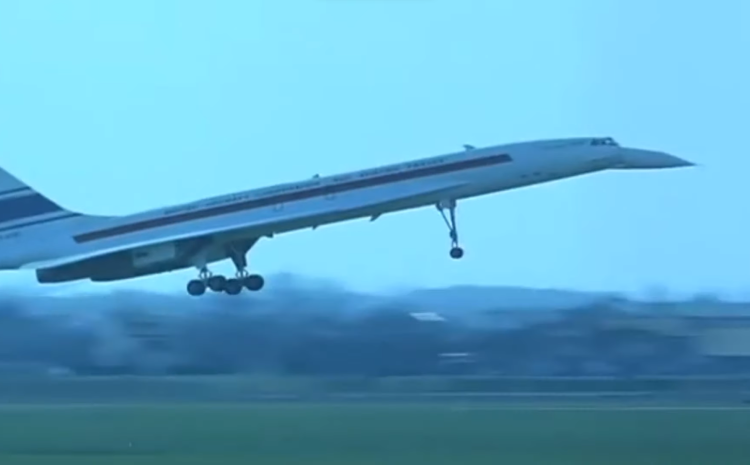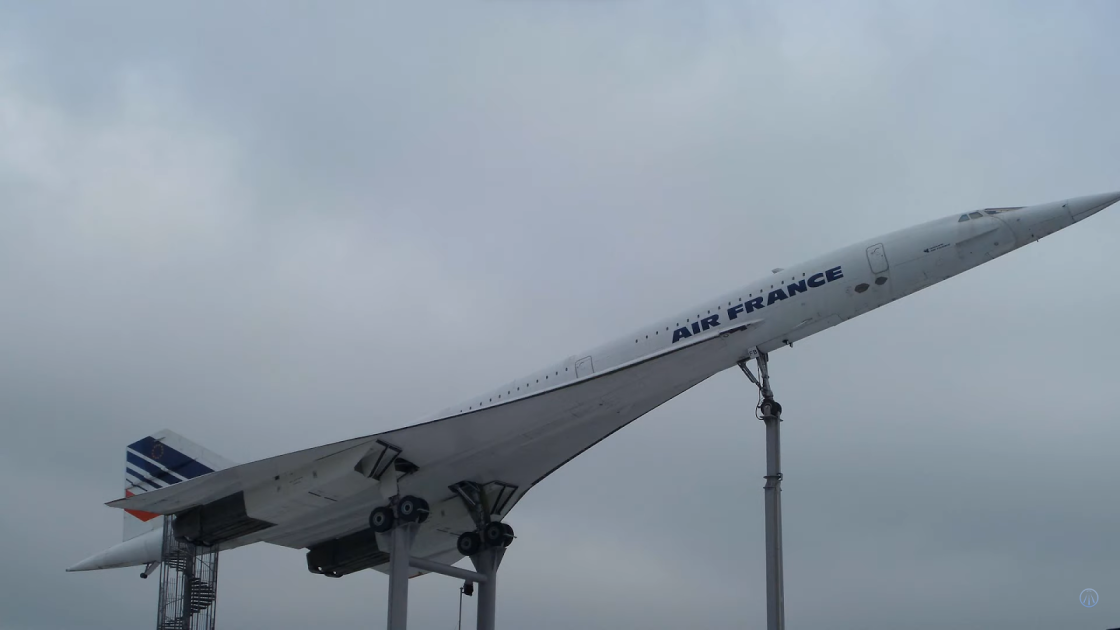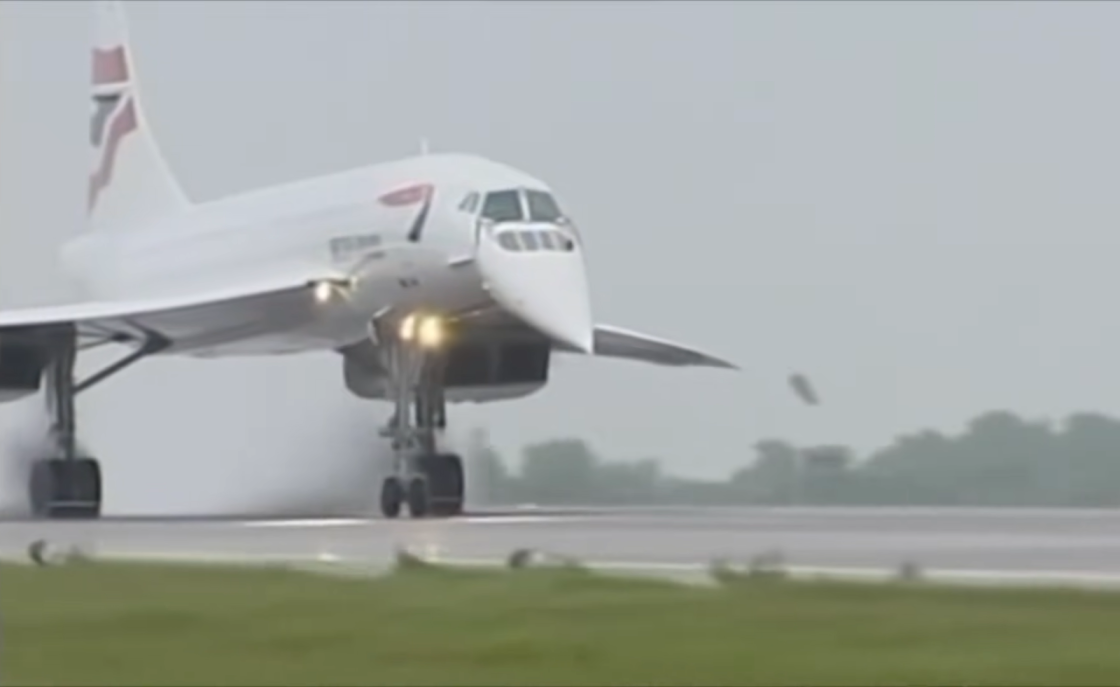Concorde Planes: Tracing Their Present Locations

The Concorde, an iconic supersonic aircraft, retired in 2003 after a distinguished career in the skies. However, its legacy lives on, as these remarkable planes can still be admired in various locations worldwide. Let’s delve into the current whereabouts of these magnificent Concordes. The Concorde, an extraordinary turbojet supersonic airliner born out of a collaborative effort between Britain and France, etched its name in aviation history as one of the only two supersonic aircraft to serve commercial flights. Its engineering brilliance shone through with a remarkable cruising speed of Mach 2.04, translating to approximately 1,354 mph or 2,180 km/h.
A total of 20 Concordes were manufactured, encompassing six prototypes and development aircraft, among which 14 were dedicated to commercial operations from 1976 until their eventual retirement in 2003. Exclusively operated by British Airways and Air France, all but two of these exceptional aircraft have withstood the test of time and still exist today, leaving a lasting legacy in the world of aviation.
One of the Concorde’s most notable feats was its regular transatlantic flights, completing these routes in less than half the time of conventional airliners. For instance, the journey from London to New York took under three and a half hours, showcasing its incredible speed and efficiency.
So, where can you find the Concorde planes now? Presently, enthusiasts and admirers have the opportunity to experience the Concorde in five different countries, where these magnificent aircraft are preserved as a testament to their groundbreaking era in aviation history.
The Quantity of Concordes Constructed
- Between 1965 and 1979, the British-French consortium successfully constructed a total of 20 Concordes, comprising six prototype and development versions;
- During the 1960s, over a dozen airlines expressed keen interest in the Concorde.
Prominent carriers like Pan Am, Qantas, and Japan Airlines were among those enthusiastic about purchasing this groundbreaking aircraft. Consequently, numerous airlines initially placed orders for the Concorde, but a significant number of them later canceled their reservations.
The cancellations were primarily influenced by several factors. Firstly, the cost of developing the aircraft skyrocketed, surpassing the projected estimates by more than six times, leading to a substantial increase in the final price of the plane. Secondly, the inevitable sonic boom created when the Concorde broke the sound barrier restricted its use for overland travel due to potential noise complaints from residents. Moreover, rising competition from more fuel-efficient aircraft and the challenges posed by the 1973 oil crisis added to the difficulties faced by airlines operating the Concorde.
Out of the 14 production Concordes, British Airways and Air France were the sole purchasers, acquiring seven aircraft each. Both airlines retired their respective Concordes in 2003, with a British Airways Concorde marking the final commercial flight on 24 October 2003.
Remaining Concordes: How Many Exist Today?
The Concorde, a joint venture by the British-French consortium, was a limited production with a total of 20 aircraft, including 14 passenger service Concordes and six prototypes and development models.
Currently, 18 Concordes remain worldwide, with two missing planes. One of the missing Concordes met a tragic fate in 2000 when it crashed due to striking a foreign object during takeoff from Charles de Gaulle airport. This led to a tire puncture, causing a fire and loss of thrust in engines 1 and 2. The severe damage resulted in the plane crashing into a hotel just two minutes after takeoff, tragically claiming the lives of all 109 people on board and four individuals in the hotel.
Another Concorde, with registration F-BVFD, had a relatively short service life, retiring in 1982 after flying only 5,814 hours. Air France took it out of service due to an excess of Concordes after closing the Paris-Dakar-Rio route. Additionally, F-BVFD had undergone repairs following a hard landing in 1977, which was another reason for its retirement. The aircraft was eventually scrapped in 1994 after being stored outdoors for 12 years, leading to severe corrosion. However, parts of the plane found new homes, with the nose cone being sold to an American collector, and a section of the fuselage surviving at Le Bourget, France.
Concordes in the United Kingdom: Preserving Aviation History
As a remarkable British-French collaboration, numerous Concordes have found their final resting place in the United Kingdom. Presently, the UK is home to a total of seven Concordes, each representing a significant part of aviation history. Among them, British Airways proudly operated four Concordes, while the remaining three were esteemed test and development aircraft.
Test and Development Concordes in the United Kingdom
The Concorde’s creation was a joint effort between the United Kingdom and France. One of the UK’s most notable contributions was the construction of the first prototype, registered as G-BSST. Today, this historic aircraft stands on display at the Fleet Air Arm Museum in Yeovilton, serving as a testament to the pioneering engineers who sought to validate its performance and supersonic capabilities. This initial prototype played a crucial role in the aircraft’s development journey, paving the way for subsequent efforts to transform it into a certified airliner of unprecedented achievement.
At the Imperial War Museum in Duxford, aviation enthusiasts can marvel at a significant piece of history, a pre-production model of the Concorde registered as G-AXDN. These pre-production models served a vital role in introducing innovative improvements and refinements before embarking on full-scale production. Among the upgrades were a new wing plan, increased fuel capacity, and a redesigned engine intake system, contributing to the Concorde’s eventual iconic status.
In Weybridge, Surrey, the Brooklands Museum houses another notable pre-production model (registration G-BBDG). This aircraft holds a remarkable accolade, being the first in history to transport 100 passengers at supersonic speeds in 1974. This extraordinary feat further solidified the Concorde’s position as an aviation marvel, showcasing its pioneering capabilities to the world. Both exhibits stand as tributes to the Concorde’s remarkable development journey and its lasting impact on the world of aviation.
The Historic Concordes of the United Kingdom
Within the United Kingdom, significant historical treasures await aviation enthusiasts in the form of production Concordes. Among these remarkable aircraft, Manchester Airport proudly houses the G-BOAC, one of the very first production Concordes to be operated by British Airways. Notably, G-BOAC stands as one of the heaviest Concordes, as later aircraft benefited from design modifications and weight reductions. Serving as British Airways’ flagship Concorde, its name “BOAC” pays homage to the initials of the predecessor to the renowned airline.
Meanwhile, Scotland’s aviation pride lies at the National Museum of Flight in East Lothian. Named G-BOAA, this Concorde holds the distinction of being the first aircraft ever received by British Airways on January 14, 1976. Notably, G-BOAA also earned the honor of performing British Airways’ inaugural commercial Concorde flight, an achievement shared simultaneously with Air France on January 21, 1976. These iconic Concordes serve as enduring symbols of aviation history, reflecting the unparalleled accomplishments of this supersonic marvel.
Heathrow Airport proudly hosts a retired British Airways Concorde (G-BOAB), now repurposed for personnel training. This particular aircraft, unfortunately, did not undergo the return-to-flight modifications following the Paris crash. After its last flight as a positioning journey from New York to Heathrow Airport, it gracefully retired from the skies, never to soar again.
Meanwhile, the Aerospace Bristol aerospace museum, nestled near Filton, is home to a significant piece of aviation history, the last Concorde ever built (G-BOAF). This iconic aircraft made history by performing the final flight of all Concordes on November 26, 2003. As a prized exhibit, G-BOAF stands as a testament to the remarkable achievements of this supersonic marvel, leaving an indelible mark on the world of aerospace innovation. Both exhibits serve as a tribute to the Concorde’s enduring legacy and its profound impact on the aviation industry.
Concordes in France

France proudly houses six Concordes, with a captivating mix of former prototype and development aircraft, as well as Air France’s esteemed production models.
Test and Development Concordes in France
- Among the treasured exhibits in France is the first-ever Concorde prototype (F-WTSS) displayed at the Museum of Air and Space in Le Bourget, Paris;
- This aircraft took its inaugural flight on March 2, 1969, concluding its journey on October 19, 1973.
Purpose-built to validate supersonic calculations and assess airframe performance, F-WTSS provided invaluable data for the construction of pre-production models.
The fourth Concorde built, F-WTSA, also a pre-production model, took flight on January 10, 1973. Distinguished as the first Concorde showcasing the shape and features of future production models, it made history by flying to the United States and touching down in Dallas on September 20, 1973. Adorned with dual British Airways and Air France liveries for several years, F-WTSA now finds its place of honor at the Delta Museum in Orly Airport, Paris.
Near the Airbus factory in Toulouse, the Aeroscopia museum proudly exhibits another pre-production Concorde (F-WTSB), which commenced its journey on December 6, 1973, and concluded its flight career on April 19, 1985, with a total of 909 flying hours.
Production Concordes in France: Unrivaled Elegance and Innovation
The Aeroscopia museum is home to two Concordes, including F-BVFC, an Air France marvel that graced the skies on July 9, 1976, taking its well-deserved retirement with 14,332 flying hours. Remarkably, it performed Air France’s final Concorde flight on June 27, 2003.
At the Museum of Air and Space in Le Bourget, Paris, aviation enthusiasts can marvel not only at the prototype (F-WTSS) but also at F-BTSD, an Air France Concorde. F-BTSD once sported a captivating blue Pepsi livery in 1996, albeit limited to flying at Mach 2.02 for 20 minutes due to heat build-up. Under its standard white color, it reached Mach 1.7, successfully mitigating heat generated by air friction at high speeds.
Lastly, Charles de Gaulle Airport in Paris houses the final Concorde in France, F-BVFF. Its inaugural flight took place on December 26, 1978, and it retired with a total of 12,421 flying hours. Although it tragically underwent maintenance during the fateful crash on July 25, 2000, F-BVFF remains a symbol of the Concorde’s indelible legacy, gracefully concluding its flight history on June 11, 2000.
Concordes in the United States
In the United States, there are three Concordes currently residing, all of which were previously operated by British Airways and Air France.
One of these Concordes, an Air France model with the registration F-BVFA, can be found at the Smithsonian National Air and Space Museum in Chantilly, Virginia. This particular aircraft holds historical significance, as it served on the inaugural Air France Concorde flight to Rio in 1976. Its flying career concluded on June 12, 2003, after accumulating an impressive 17,824 flying hours.
Another Concorde, belonging to British Airways and registered as G-BOAD, is on display at the renowned Intrepid Sea, Air, and Space Museum in New York City. In 1977 and from 1979 to 1981, this aircraft showcased a unique livery featuring a combination of British Airways and Singapore Airlines, during the period when the two airlines jointly operated a service between Bahrain and Singapore. Notably, G-BOAD holds the record for the fastest Atlantic crossing by a Concorde, completing the New York to London trip in just 2 hours, 52 minutes, and 59 seconds. Upon its retirement on November 10, 2003, G-BOAD had accumulated the highest total flying time among all Concordes, with an impressive 23,397 flying hours.
Lastly, the Museum of Flight in Seattle houses the G-BOAG British Airways Concorde, which made its maiden flight on April 21, 1978. Unlike its counterparts, G-BOAG had a less glamorous journey. After facing a lack of buyers, it did not enter service until 1980, nearly two years after its construction was completed. Eventually, British Airways repurposed it for spare parts, but later reintroduced it into service. Throughout its operational years, G-BOAG completed over 5000 flights and retired with a total of 16,239 flying hours under its belt.
Concordes in Germany
Only one Concorde can be found in Germany, specifically at Technik Museum Sinsheim. This particular aircraft is an Air France Concorde with the registration F-BVFB. Rather than being grounded, the museum has creatively displayed it as if it were in flight, allowing visitors to explore it up close. Notably, the original four Rolls-Royce/Snecma Olympus 593 engines are also on exhibit for visitors to admire.
F-BVFB was originally manufactured in Toulouse and took its inaugural flight on March 6, 1976. Throughout its operational years, it accumulated a total of 14,771 flying hours before its retirement in June 2003. It’s worth noting that between 1990 and 1997, F-BVFB was placed in long-term storage, preserving it for future generations to appreciate its historical significance.

Concordes in Barbados
While it may not be the first place one would expect to find a Concorde, Barbados is home to a remarkable exhibit near the Grantley Adams International Airport in Bridgetown. This exhibition, known as “The Concorde Experience,” proudly showcases a British Airways Concorde with the registration G-BOAE, which is accessible to the public.
G-BOAE holds a notable place in history, as it participated in a memorable event, flying in formation with the Red Arrows to celebrate the inauguration of the Scottish Parliament in July 1999. During its final flight to Barbados, this Concorde achieved the remarkable feat of reaching the maximum certified altitude of 60,000 feet.
Throughout its active service, G-BOAE amassed an impressive 23,376 flying hours before gracefully retiring to its current home in Barbados on November 17, 2003. Now, visitors have the unique opportunity to explore and appreciate this iconic aircraft at “The Concorde Experience” exhibition.
The Limited Production of Concordes: Factors and Challenges
The British-French consortium embarked on building 20 Concordes, including prototypes and development models, but ultimately, only 14 commercial production models were operated by two airlines.
In the 1960s, despite initial interest from several airlines, a combination of factors led them to cancel their orders. The development costs escalated significantly, surpassing six times the original estimates. Consequently, each Concorde came with a much higher price tag than initially anticipated.
Moreover, the Concorde’s sonic boom created concerns over potential complaints from people residing in areas affected by its supersonic travel over land.
The emergence of more fuel-efficient aircraft, notably the Boeing 747, posed stiff competition and made the Concorde appear as an expensive and high-risk investment for airlines. The 1973 oil crisis further fueled caution among airlines.
During the early stages, the consortium behind the Concorde received options for more than 100 aircraft. However, due to the aforementioned challenges and factors, only 14 production models were ultimately built.
Conclusion
The Concorde gained its fame for its ability to fly at twice the speed of sound, offering passengers a luxurious experience in the air.
However, economic challenges and growing competition from more efficient aircraft eventually marked the end of the Concorde’s era. Despite its legendary status as a supersonic plane, its presence in the skies became a thing of the past.
Nonetheless, there are still places where enthusiasts can relish the Concorde’s memory and experience its grandeur. While it may no longer soar through the skies, its legacy lives on in select locations.